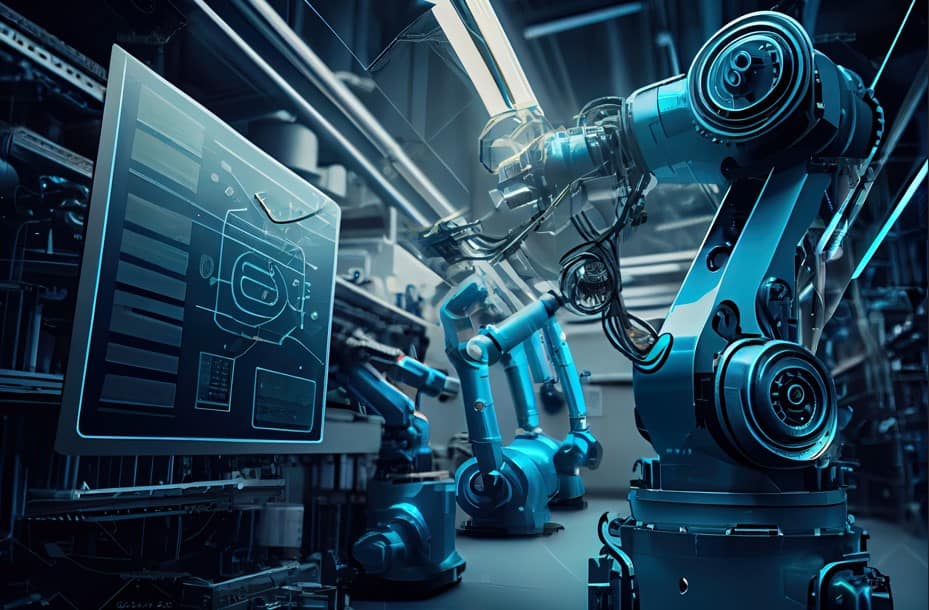Human-Centric Automation: Balancing Efficiency, Ergonomics, and Worker Well-Being
Automation has revolutionized industrial operations—delivering unprecedented speed, precision, and productivity. Yet, it has also sparked concerns over job displacement, worker fatigue, and the growing divide between humans and machines. The response? A paradigm shift toward human-centric automation, where technology enhances rather than replaces people. This movement aligns with Industry 5.0, prioritizing resilience, sustainability, and inclusivity alongside efficiency. As an industrial automation engineer, I’ve seen how this approach transforms workplaces into collaborative ecosystems where intelligent systems amplify human potential.
From Industry 4.0 to Industry 5.0: A Human-Focused Evolution

Industry 4.0 brought digital transformation—smart factories, IoT, and AI-driven decisions. Industry 5.0 builds on this foundation but re-centers human value. It recognizes that creativity, intuition, and empathy cannot be automated. The goal is no longer full replacement but augmentation, where machines handle repetitive or hazardous tasks, freeing workers for higher-value contributions.
Core Principles of Human-Centric Design
Human-centric automation focuses on ergonomics, empathy, and performance optimization. According to ResearchGate, this means designing systems that reduce physical and cognitive strain while boosting output. Key elements include intuitive interfaces, adaptive robotics, and personalized workstations that respond to individual needs—turning rigid assembly lines into dynamic, worker-supportive environments.
Key Technologies Driving the Shift
Collaborative Robots (Cobots)
Unlike traditional industrial robots confined to safety cages, cobots work alongside humans. Equipped with advanced sensors and AI, they detect proximity, adjust force, and adapt motions in real time—reducing injury risk and physical load. Cobots are now standard in assembly, packaging, and quality inspection.
Adaptive Automation Systems
Modern systems monitor worker posture, stress, and cognitive load via real-time data. Using AI, they dynamically adjust task allocation, speed, or tool positioning to prevent fatigue and errors. For example, a system might slow a conveyor if an operator shows signs of strain.
Wearables and Real-Time Monitoring
Smart wearables—exoskeletons, posture sensors, and biometric watches—track movement, heart rate, and fatigue. Data feeds into control systems that trigger breaks, adjust workstation height, or reroute tasks to maintain peak performance and safety.
Extended Reality (XR) for Training and Simulation
Virtual and augmented reality enable risk-free, immersive training. Workers practice complex procedures in simulated environments, reducing mental and physical stress during real operations. XR also supports ergonomic process design by visualizing workflows before implementation.
Proven Benefits in the Workplace
Enhanced Safety and Reduced Injury
Musculoskeletal disorders plague manufacturing and logistics due to repetitive motions. Human-centric systems cut injury rates by up to 70% through proactive posture correction and load assistance.
Sustained Productivity Gains
Contrary to fears of slowdown, supporting worker comfort leads to long-term efficiency gains. Rested, focused operators make fewer errors and maintain consistent output—proving that well-being drives performance.
Higher Job Satisfaction and Retention
When workers feel valued—not monitored or replaced—engagement rises. Companies adopting human-centric models report lower turnover and greater willingness to upskill, critical in a rapidly evolving tech landscape.
Real-World Success Stories
Smart Textile Factory in China
A high-tech garment facility integrates AI, wearables, and cobots. Operators use voice-activated interfaces and receive real-time ergonomic feedback via smart glasses. Result: 25% higher output, 40% fewer strain-related absences, and improved morale.
Posture-Aware Robotic Assistant
An arXiv-published study details a cobot that analyzes human posture every 0.5 seconds and adjusts its movements to minimize ergonomic risk. This prototype is being scaled in European automotive plants.
Participatory Ergonomics in Construction
European contractors involve workers in tool and process design. Using XR simulations and feedback loops, they’ve reduced back injuries by 60% while accelerating project timelines.
Challenges to Overcome
Legacy System Integration
Retrofitting older plants with adaptive tech is costly and complex. Phased upgrades and modular solutions are essential.
Workforce Resistance
Fear of change is natural. Success depends on transparent communication, hands-on training, and demonstrating tangible benefits—like reduced physical strain.
Data Privacy and Ethics
Biometric monitoring raises valid concerns. Companies must implement strict consent protocols, anonymized data, and clear usage policies to build trust.
Skills Gap
Human-centric automation demands digital literacy and HCI (human-computer interaction) skills. Continuous training programs are non-negotiable.
The Future: A Truly Adaptive Workplace
Tomorrow’s factories will be living systems. AI will generate personalized workflows based on real-time worker data—optimizing for both output and well-being. Neuroergonomics will monitor cognitive load, auto-adjusting tasks to prevent burnout. KPIs will evolve beyond units per hour to include well-being scores and ergonomic risk indices.
Sustainability will deepen integration: biodegradable wearables, energy-optimized cobots, and algorithms that minimize exposure to heat, noise, or toxins.
Conclusion: Technology in Service of Humanity
Automation must not outpace empathy. Human-centric automation is not a trend—it’s a necessity. It builds workplaces that are not just smarter, but kinder, safer, and more sustainable. By fusing cutting-edge technology with ergonomic insight and human respect, we create environments where efficiency and dignity coexist. The future of industry isn’t about replacing people—it’s about empowering them.

